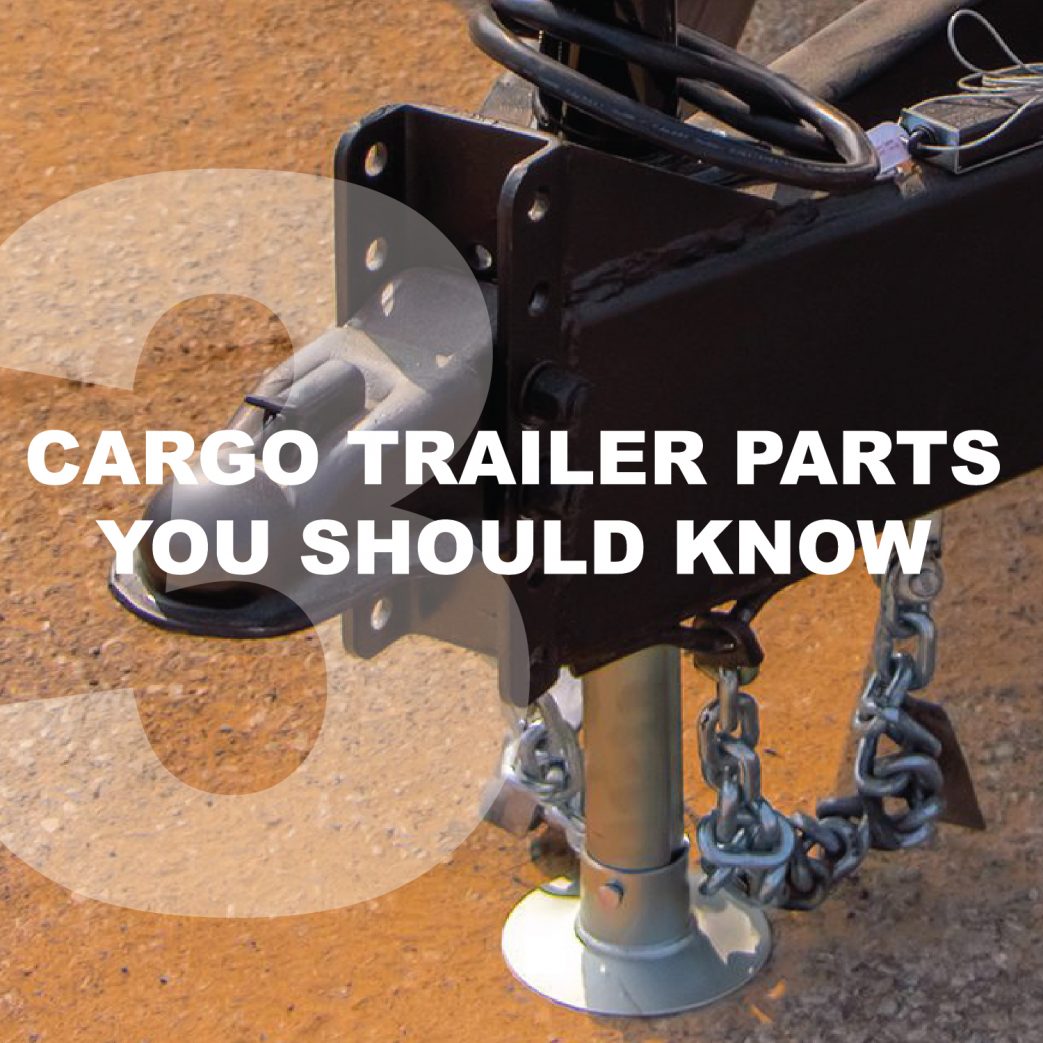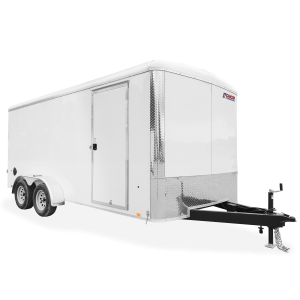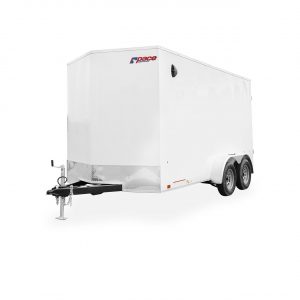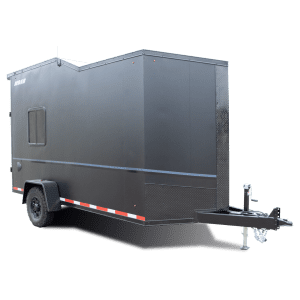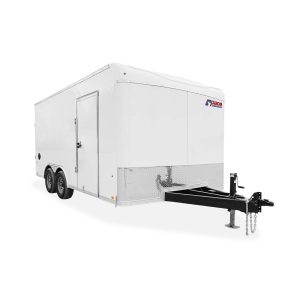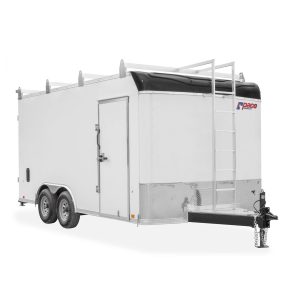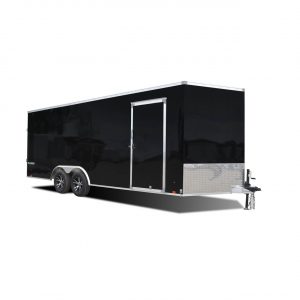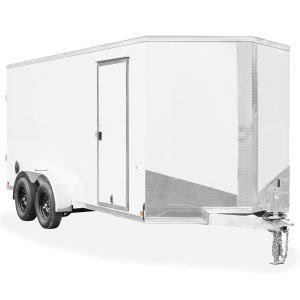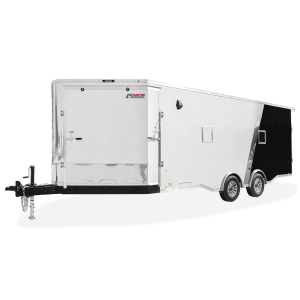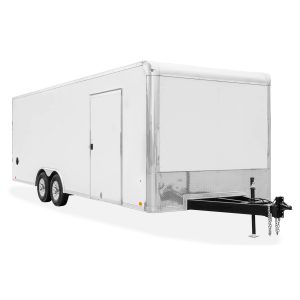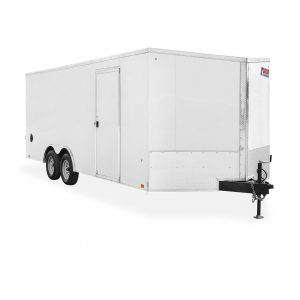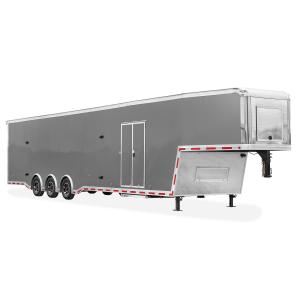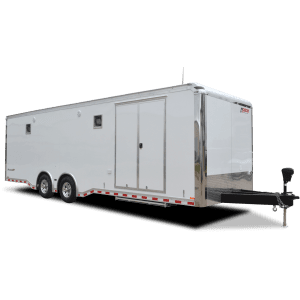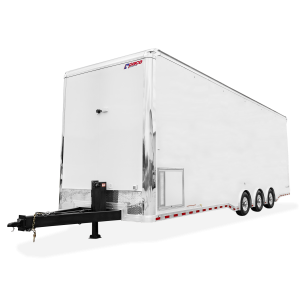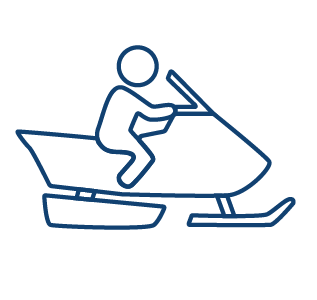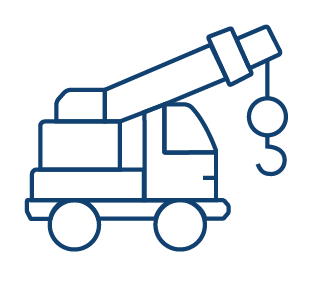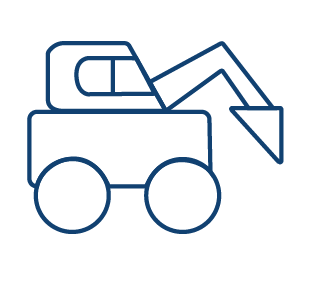Enclosed cargo trailers offer you the ability to haul items large and small wherever you want to go, both safely and efficiently. At Pace American, we want you to be as knowledgeable as possible about your cargo trailer, so you can use and maintain it properly. In this quick read, we’ll discuss couplers and jacks, what they are, and how these cargo trailer parts apply to your type of trailer.
What is a coupler?
A trailer hitch coupler is the connection point mounted on the trailer that connects the trailer to the tow vehicle. Couplers come in different sizes, types, and weight capacities. The type of coupler you have (or need, if you’re replacing it) must match up to the characteristics of the cargo trailer.
What is a jack?
A jack is a device on the trailer that is used to raise and lower the trailer tongue. This helps you attach the trailer to the tow vehicle. On larger trailers, the jack is sometimes called the “landing gear.” Like couplers, jacks come in different sizes and types.
What is the GVWR?
Before you choose a coupler, you will need to know the Gross Vehicle Weight Rating (GVWR). The GVWR is the maximum allowable gross weight of the trailer and its contents. The gross weight of the trailer includes the weight of the trailer and all of the items within it (such as cargo, water, food, and other supplies). Note: Pace American dealers can help you determine the GVWR.
The following descriptions explain the different types of couplers, the jacks you use with them, and safety specifications.
1. Ball hitch coupler. A ball hitch coupler connects to a ball that is located on or under the rear bumper of the tow vehicle. This system of coupling a trailer to a tow vehicle is sometimes referred to as “bumper pull.” A ball hitch trailer may be fitted with a tongue jack that can raise and lower the coupler. The tongue jack is mounted to the A-frame (front, or tongue) part of the trailer. By rotating the jack handle clockwise, the jack will extend and raise the tongue of the trailer.
Be sure the ball hitch coupler is suitable for the size and weight of the trailer. The load rating of the coupler and the necessary ball size are listed on the trailer tongue. You must provide a hitch and ball for your tow vehicle, where the load rating of the hitch and ball is equal to or greater than that of your trailer. Also, the ball size must be the same as the coupler size. If the hitch ball is too small, too large, is underrated, is loose, or is worn, the trailer can come loose from the tow vehicle, possibly resulting in damage and serious injuries. The tow vehicle, hitch, and ball must have a rated towing capacity equal to or greater than the trailer’s GVWR. It is essential that the hitch ball is of the same size as the coupler. The ball size and load rating (capacity) are marked on the ball; hitch capacity is marked on the hitch.
2. Gooseneck coupler. A gooseneck coupler on the trailer connects to a gooseneck ball that you must have installed in the bed of the tow vehicle, and it’s used with a drop-leg jack. This system of coupling a trailer to a tow vehicle permits the tow vehicle to turn to sharper angles than are permitted by a bumper hitch system. A gooseneck coupler consists of a tube in an inverted “U” shape and a gooseneck ball receiver. (Pace’s trailers have a gooseneck ball receiver installed that is suitable for the size and weight of the trailer.) The load rating of the coupler and the necessary ball size are listed on the gooseneck. You must provide a gooseneck ball and support structure that is marked with a rating that meets or exceeds the GVWR of your trailer and matches the size of the gooseneck ball receiver. As with the ball hitch, if the gooseneck ball is too small, is underrated, is loose, or is worn, the trailer can come loose from the tow vehicle and may lead to damage and injury. The tow vehicle, support structure, and gooseneck ball must have a rated towing capacity equal to or greater than the trailer’s GVWR.
3. Fifth-wheel coupler. A fifth wheel coupler on the trailer connects to a kingpin that is installed on the tow vehicle. A fifth wheel coupler includes a flat, load-bearing plate with a slot and a mechanism inside the slot that “grips” the kingpin. (Pace American trailers have a fifth wheel coupler installed that is suitable for the size and weight of the trailer.) You must provide a kingpin and kingpin plate that matches the fifth wheel, and that is rated for the GVWR of your trailer. Be sure the size and rating of the fifth wheel and kingpin match. A trailer having a fifth wheel coupler will be outfitted with one or two drop leg jacks for raising and lowering the fifth wheel coupler.
As always, Pace American dealers are ready and willing to help ensure you have the proper equipment for your cargo trailer and tow vehicle, and they’ll help you learn how to use and maintain them. Visit your local Pace American dealer today to find out more.

